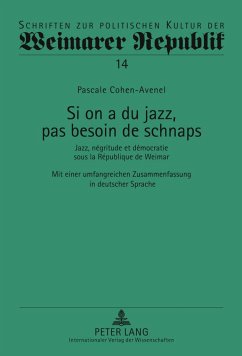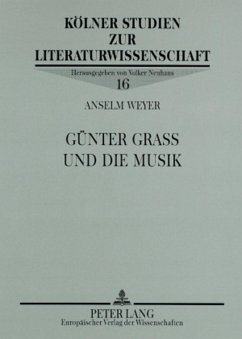
Jazz in German-language Literature
Versandkostenfrei!
Nicht lieferbar
As a first compilation of its kind on jazz in German languageliterature, the present volume contains 16articles that broaden the current discussion aboutjazz in German, Austrian, and Swiss literature. Scholarsfrom diverse backgrounds trace the influence ofNorth American jazz on Western and Central Europethrough readings of novels, novellas, poems, radioplays, and essays about jazz, written or published inGerman from the mid-1920s through the twenty-firstcentury. At the core of modernity and urban sociohistoricalculture, jazz maintains its relevance forGerman-speaking cultures as a vehicle for ...
As a first compilation of its kind on jazz in German language
literature, the present volume contains 16
articles that broaden the current discussion about
jazz in German, Austrian, and Swiss literature. Scholars
from diverse backgrounds trace the influence of
North American jazz on Western and Central Europe
through readings of novels, novellas, poems, radio
plays, and essays about jazz, written or published in
German from the mid-1920s through the twenty-first
century. At the core of modernity and urban sociohistorical
culture, jazz maintains its relevance for
German-speaking cultures as a vehicle for addressing
issues of social class, gender, race and ethnicity, as
well as regional, national, and transnational identity.
literature, the present volume contains 16
articles that broaden the current discussion about
jazz in German, Austrian, and Swiss literature. Scholars
from diverse backgrounds trace the influence of
North American jazz on Western and Central Europe
through readings of novels, novellas, poems, radio
plays, and essays about jazz, written or published in
German from the mid-1920s through the twenty-first
century. At the core of modernity and urban sociohistorical
culture, jazz maintains its relevance for
German-speaking cultures as a vehicle for addressing
issues of social class, gender, race and ethnicity, as
well as regional, national, and transnational identity.












